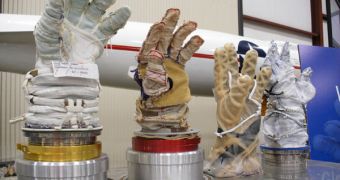As part of NASA's Centennial Challenges Competition, the American space agency is offering more than $400,000 to the team that can design the most dexterous, strongest and most durable astronaut glove, in the Astronaut Glove Challenge. This is the second edition of the competition, through which the agency is seeking to innovate its designs, and to get fresh, outside perspectives on how future spacesuits should look like, Space reports.
Gloves are “probably the most difficult part of the spacesuit to make. The original intent of the challenge was to see if opening this up to a wide-open field of innovators, they might come up with some new ideas that would be an improvement over what exists now,” Centennial Challenges Program Manager Andy Petro reveals. The final stages of the competition are being held at the Astronaut Hall of Fame in Titusville, Florida, near the Kennedy Space Center, in Cape Canaveral. This year, two teams have entered the contest, including a previous winner of the trophy.
One reason why astronaut gloves are so difficult to engineer is the fact that they must withstand the harshness of space, the freezing temperature, and the rigors of manipulating massive pieces of equipment, all while allowing the astronauts to maintain their mobility and dexterity. NASA revealed that, if any of the competitors managed to come up with a design that was better than the one the agency was using at the moment, then a part, or the full, award would be given away to that team. The top prize in the competition is of $250,000, with the runner-up being awarded some $100,000.
Participants “bring several copies of the glove, and one of them gets destroyed in the testing.” Petro adds. During the trials the equipment will be subjected to, some of the gloves will be placed in a box that simulates the vacuum and coldness of space. Other pairs will be filled with water until they burst, so as to give analysts a precise measure of their strength. Additionally, the devices must also contain an outer thermal shield to protect against the cold, and be rough enough to handle impacts from micrometeorites and small pieces of space junk.

 14 DAY TRIAL //
14 DAY TRIAL //